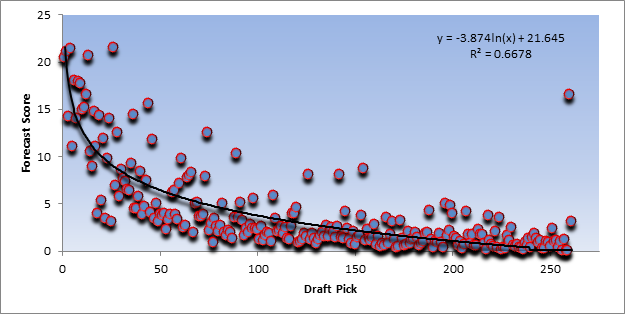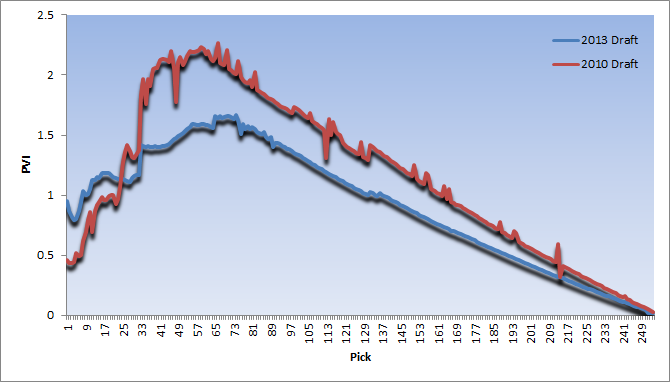Updated- April 28, 1:04 AM
[adsenseyu1]
I have compiled this list from various Twitter and news reports of those people who are consistently accurate in most of their reports. By no means is this complete and there may be errors here and there but Ill try to keep it updated over the next few days
Arizona Cardinals
Jaron Brown, WR Clemson
Dan Buckner, WR, Arizona
Joe Caprioglio, T, Colorado State
Kenny Demens, LB, Cincinnati
Javon Harris, S, Oklahoma
Josh Hill, CB, California
Tony Jefferson, S, Oklahoma
Jamaal Johnson-Webb, T, Alabama A&M
Korey Jones, LB, Wisconsin
Javone Lawson, WR, Louisiana-Lafayette
Michael Rios, WR, Marist
Padric Scott, DT, Florida A&M
Tyler Shaw, WR, NW Missouri State
Prentiss Waggner, CB, Tennessee
Ronnie Yell, CB San Jose State
Atlanta Falcons
Casey Barth, K, North Carolina
Joplo Bartu, LB, Texas State
Devonte Campbell, RB, Maryland
Nick Clancy, ILB, Boston College
Seth Doege, QB, Texas Tech
Rashad Evans, WR, Fresno State
Deon Goggins, RB, Syracuse
Theo Goins, G, Central Florida
Cam Henderson, DE, Central Florida
Neal Huynh, DT, Ohio
Darius Johnson, WR, SMU
Terren Jones, T, Alabama State
Martel Moore, WR, Northern Illinois
Adam Replogle, DT, Indiana
Donald Russel, RB, Georgia State
Troy Sanders, S, Appalachian State
Alec Savoi, T, McNeese State
Ryan Schraeder, T, Valdosta State
Sean Sellwood, P, Utah
Matt Smith, C, Kentucky
Momo Thomas, CB, Colorado State
Brandon Thurmond, DE, Arkansas Pine-Bluff
Ronnie Wingo, RB, Arkansas
Paul Worrilow, LB, Delaware
Baltimore Ravens
Jeff Braun, G, West Virginia
Jose Cheeseborough, CB, Florida International
Jermaine Copeland, DE, Penn
Jordan Devey, T, Memphis
Matt Furstenburg, TE, Maryland
Rogers Gaines, T, Tennessee State
Omarius Hines, WR, Florida
Ray Holley, RB, Louisiana Tech
Murphy Holloway, TE, Mississippi
Moe Lee, CB, Utah
Gerrard Sheppard, WR, Towson
Nathan Stanley, QB, Southeast Louisiana
Trent Steelman, WR, Army
Brynden Trawick, S, Troy
Buffalo Bills
Zach Chibane, G, Syracuse
Izaan Cross, DE, Georgia Tech
Jordan Dangerfield, S, Towson
Kip Edwards, CB, Missouri
Kendall Gaskins, RB, Richmond
Brandon Kaufman, WR, Eastern Washington
Vernon Kearney, CB, Lane
Kevin Norrell, WR, Stony Brook
Keith Pough, ILB, Howard
Nickell Robey, CB, USC
Da’Rick Rogers, WR, Tennessee Tech
Jumal Rolle, CB, Catawba
Drew Smith, RB, Albany
Aaron Tipoti, DT, California
Jeff Tuel, QB, Washington State
Ryan Turnley, C, Pittsburgh
Carolina Panthers
Colby Cameron, QB, Louisiana Tech
Taylor Cook, TE, Rice
Trey Diller, WR, Sam Houston State
Wes Horton, OLB, USC
Damario Jeffery, LB, South Carolina
Robert Jones, G, East Carolina
Robert Lester, S, Alabama
Morgan Lineberry, K, Abilene Christian
Tori Mobley, G, Jacksonville State
Craig Roh, DE, Michigan
Casey Walker, DT, Oklahoma
Melvin White, CB, Louisiana Lafayette
Michael Zordich, FB, Penn State
Chicago Bears
Michael Ford, RB, LSU
Mark Harrison, S, Rutgers
Demontre Hurst, CB, Oklahoma
Josh Lenz, WR, Iowa State
PJ Lonergan, C, LSU
Zach Minter, DT, Montana State
Marcus Rucker, WR, Memphis
Brent Russell, DT, Georgia Southern
Tress Way, P, Oklahoma
CJ Wilson, CB, NC State
Cincinnati Bengals
Larry Black, DT, Indiana
Jordan Campbell, OLB, New Mexico Highlands
Tyrone Goard, WR, Eastern Kentucky
Onterrio McCaleb, RB, Auburn
Jayson DiManche, OLB, Southern Illinois
Cleveland Browns
Aaron Adams, LT, Eastern Kentucky
Perez Ashford, WR, Northern Illinois
Josh Aubrey, CB, Stephen F. Austin
Braxston Cave, C, Notre Dame
Jamaine Cook, RB, Youngstown State
Dominique Croom, WR, Central Arkansas
Kennan Davis, WR, Iowa
Mike Edwards, WR, Texas-El Paso
Paipai Falemalu, T, LSU
Chris Faulk, T, LSU
Caylin Hauptmann, T, Florida International
Garrett Hoskins, TE, Eastern Michigan
David Kruger, DT, Utah
Cordell Roberson, WR, Stephen F Austin
Justin Staples, DE, illinois
Travis Tannahill, TE, Kansas State
Ricky Tunstall, DB, Delaware
Dallas Cowboys
Paul Freedman, FB, Virginia
Jakar Hamilton, CB, South Carolina State
Dustin Harris, CB, Texas A&M
Jeff Heath, S, Saginaw Valley
Greg Herd, WR, Eastern Washington
Cameron Lawrence, OLB, Mississippi State
Kendial Lawrence, RB, Missouri
Brandon Magee, OLB, Arizona State
Taylor Reed, ILB, SMU
Devin Smith, CB, Wisconsin
Dalton Williams, QB, Akron
Denver Broncos
CJ Anderson, RB, California
Kemonte Bateman, WR, New Mexico State
Ryan Doerr, P, Kansas State
Manase Foketi, G, Kansas State
Aaron Hester, CB, UCLA
Ryan Katz, QB, San Diego State
Uona Kaveinga, ILB, BYU
Gary Mason Jr, DE, Baylor
Lerentee McCray, OLB, Florida
Quincy McDuffie, WR, Central Florida
Ross Rasner, S, Arkansas
Lucas Reed, TE, New Mexico
Doug Rippy, ILB, Colorado
Lamaar Thomas, WR, New Mexico
John Youboty, DE, Temple
Detroit Lions
Alex Carder, QB, Western Michigan
Austin Holtz, T, Ball State
Steven Miller, RB Appalachian State
Jon Morgan, LB, Albany
Martavius Neloms, S, Kentucky
Cody Wilson, WR, Central michigan
Green Bay Packers
Matt Brown, RB, Temple
Gilbert Pena, DT, Mississippi
Damond Smith, CB, South Alabama
Jake Stoneburner, TE, Ohio State
Lane Taylor, G, Oklahoma State
Myles White, WR, Louisiana Tech
Houston Texans
Johnny Adams, CB, Michigan State
Zach Boren, FB, Ohio State
AJ Bouye, CB, UCF
Ray Graham, RB, Pittsburgh
Malik James, CB, Langston
Dennis Johnson, RB, Arkansas
Alex Lemon, WR, Syracuse
Dann O’Neil, T, Western Michigan
Jawanza Starling, S, USC
Justin Tuggle, LB, Kansas State
Indianapolis Colts
Brandon McManus, K, Temple
Dan Moore, RB, Montana
Rodrick Rumble, WR, Idaho State
Lanear Sampson, WR, Baylor
Jacksonville Jaguars
TJ Barnes, DT, Georgia Tech
Malik Bomar, LB, Cincinnati
Paul Hazel, OLB, Western Michigan
Jeff Nady, T, Nevada
Ryan Otten, TE, San Jose State
Jordan Rodgers, QB, Vanderbilt
Matt Scott, QB, Arizona
Roddy Tomlin, T, murray State
Kansas City Chiefs
Tyler Bray, QB, Tennessee
Demetrious Harris, TE, UW-Milwaukee
Brad Madison, DE, Missouri
Darryl Stonum, WR, Baylor
Drew Terrell, WR, Stanford
Miami Dolphins
Chad Bumphis, WR, Mississippi State
Jasper Collins, WR, Mount Union
Jordan Kovacs, S, Michigan
Terrell Sinkfield, WR, Northern Iowa
Minnesota Vikings
Colin Anderson, TE, Furman
Brandon Bishop, S, NC State
Jon Bonadies, G, Penn
Nicholas Edwards, WR, Eastern Washington
Darius Eubanks, S, Georgia Southern
Erik Highsmith, WR, North Carolina
Marquis Jackson, DE, Portland State
Zach Line, FB, SMU
Robbie Rouse, RB, Fresno State
Rayon Simmons, RB, Winona State
Rodney Smith, WR, Florida State
Collins Ukwe, DE, Kentucky
James Vandenberg, QB, Iowa
Camden Wentz, C, NC State
Jerodis Williams, RB, Furman
Nathan Williams, OLB, Ohio State
New England Patriots
Ryan Allen, K, Louisiana Tech
Elvis Fisher, T, Missouri
Brandon Jones, CB, Rutgers
TJ Moe, WR, Missouri
Stephen Morris, CB, Penn State
Matt Stankiewitch, C, Penn state
Zach Sudfeld, TE, Nevada
New Orleans Saints
Sean Alston, RB, West Virginia
Glenn Foster, DE, Illinois
Ryan Griffin, QB, Tulane
Josh Hill, TE, Idaho State
Ryan Lacy, CB, Utah
Tim Lelito, G, Grandy Valley State
Eric Martin, DE, Nebraska
Elliot Mealer, C, Michigan
Kevin Milton, TE, Louisiana-Monroe
Kevin Reddick, ILB, North Carolina
Ray Shipman, OLB, Central Florida
Rod Sweeting, CB, Georgia Tech
Chase Thomas, OLB, Stanford
New York Giants
Chase Clement, TE, LSU
Charles Dieuseul, ILB, Mount Union
Charles James, CB, Charleston Southern
Etienne Sabino, OLB, Ohio State
Alonzo Tweedy, S, Virginia Tech
New York Jets
Troy Davis, DE, Central Florida
Mike Edwards, CB, Hawaii
Dalton Freeman, C, Clemson
Trey Gilleo, T, Northern Arizona
Roosevelt Holliday, DT, Eastern Illinois
Jake McDonough, DT, Iowa State
Rontez Miles, S, California (PA)
Spencer Nealy, DT, Texas A&M
Chris Pantale, TE, Boston College
Mark Popek, G, South Florida
Zach Rogers, WR. Tennessee
Mike Shanahan, TE, Pittsburgh
Ryan Spadola, WR, Lehigh
Keith Stroud, WR, Bethune-Cookman
Antavious Wilson, WR, Marshall
Oakland Raiders
Billy Boyko, LB, Lehigh
Adrian Bushell, CB, Louisville
Bobby Cowan, P, Idaho
Deveric Gallington, C, Texas Tech
Shelton Johnson, S, Wisconsin
Brian Leonhardt, TE, Bemidji State
Lamar Mady, G, Youngstown State
Sam McGuffie, WR, Rice
Kyle Pardon, QB, Eastern Washington
Adam Steiner, C, Akron
Kurt Taufa’asau, DT, Wyoming
Conner Vernon, WR, Duke
John Wetzel, T, Boston College
Deonte Williams, RB, Cal-Poly
Philadelphia Eagles
Jacob Knott, ILB, Iowa
Miguel Maysonet, RB, Stony Brook
Kyle Quinn, C, Arizona
Isaac Remington, DT, Oregon
Russell Shepard, WR, LSU
Damion Square, DE, Alabama
Matt Tobin, G, Iowa
Matthew Tucker, RB, TCU
Brad Wing, P, LSU
Pittsburgh Steelers
Brian Arnfelt, D, Northwestern
Alan Baxter, LB, Northern Illinois
Nik Embernate, G, San Diego State
Reggie Dunn, WR, Utah
Mike Farrell, T, Penn State
Mike Golic, Jr., G, Notre Dame
Cordian Hagans, DE, Louisiana-Lafayette
Chris Hubbarb, G, UAB
Omar Hunter, DT, Florida
Luke Ingram, C, Hawaii
Joe Madsen, C, West Virginia
Cutis McNeal, RB, USC
Anthony Rashad White, DT, Michigan State
Ivory Wade, C, Baylor
JD Woods, WR, West Virginia
San Diego Chargers
Jahleel Addae, S, Central Michigan
Nick Becton, T, Virginia Tech
Frank Beltre, OLB, Towson
Greg Brown, CB, Kansas
Ben Cotton, TE, Nebraska
Marcus Cromartie, CB, Wisconsin
Courtney Gardner, WR, Sierra
Kwame Geathers, DT, Georgia
Michael Hill, RB, Missouri Western
Byron Jerideau, DT, South Carolina
Josh Johnson, CB, Purdue
Richard Kent, P, Vanderbilt
Jamarkus McFarlans, DE, Oklahoma
Daniel Molls, ILB, Toledo
Brandon Moore, DE, Texas
Kenny Okoro, CB, Wake Forest
Randy Richards, G, Missouri State
David Rolf, TE, Utah
Luke Tasker, WR, Cornell
Devan Walker, OLB, Southeastern Louisiana
San Francisco 49ers
MarQueis Gray, QB, Minnesota
Luke Marquardt, T, Azusa Pacific
Kevin McDermott, C, UCLA
Lawrence Okoye, DT
Seattle Seahawks
Matt Austin, WR, Utah State
Alvin Bailey, G Arkansas
Keith Boatright, DE, Southern Illinors
Ramon Buchanan, OLB, Miami
John Lotulelei, OLB, Nevada
Ray Polk, S, Colorado
Jordan Roussos, G, Bowling Green
Dominique Whaley, RB, Oklahoma
Craig Wilkins, OLB, Old Dominion
St. Louis Rams
Ray-Ray Armstrong, S, Miami
Brett Baer, K, Louisiana-Lafayette
Emory Blake, WR, Auburn
Braden Brown, T, BYU
Cody Davis, S, Texas Tech
Garrett Goebel, DT, Ohio State
Jorgan Hus, C
Al Lapuaho, DT, UTah State
Philip Lutzenkirchen, TE, Auburn
Christian Robinson, ILB, Rams
Robert Steeples, CB, Memphis
Phillip Steward, OLB, Houston
Eric Stevens, RB, California
Darren Woodard, CB, UTEP
Tampa Bay Buccaneers
Hubie Graham, TE, Pittsburgh
Akeem Shavers, RB, Purdue
Branden Smith, CB, Georgia
Nick Speller, OL, UMass
Tennessee Titans
Jack Doyle, TE western Kentucky
Washington Redskins
Marvin Burdette, LB, Alabama-Birmingham
Will Compton, ILB, Nebraska
RJ Mattes, T, NC State
Xavier Nixon, Florida
Chip Reeves, WR, Troy
Tevita Stevens, C, Utah
Jason Thompson, WR, New Haven
Nick Williams, WR, Connecticut
[adsenseyu2]

